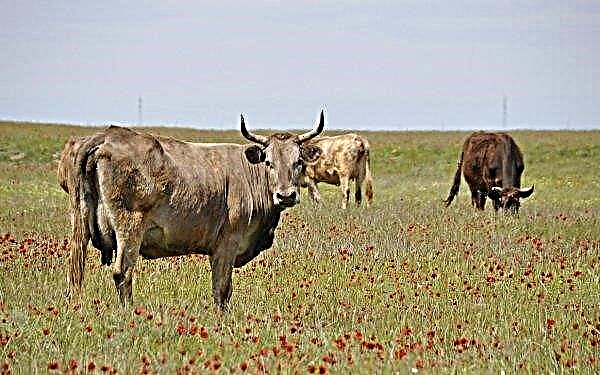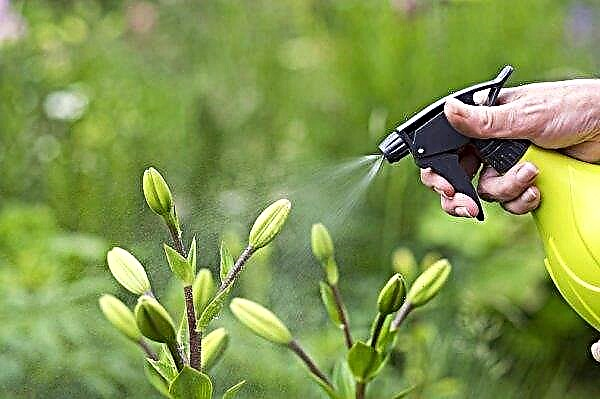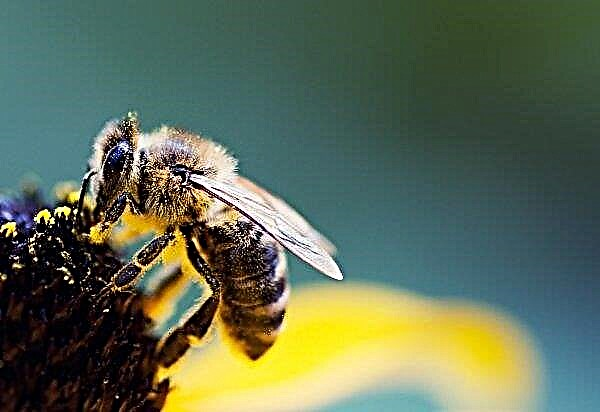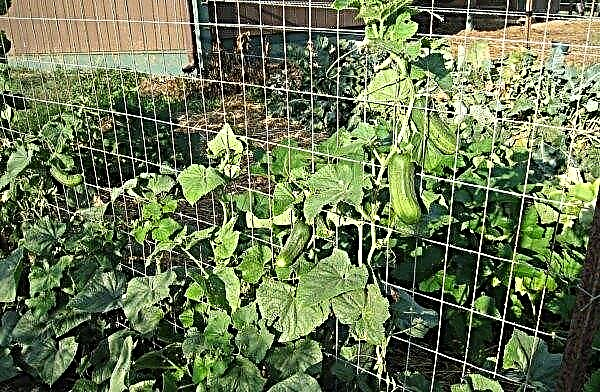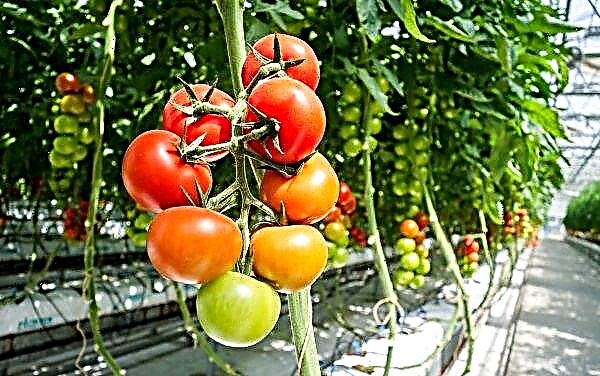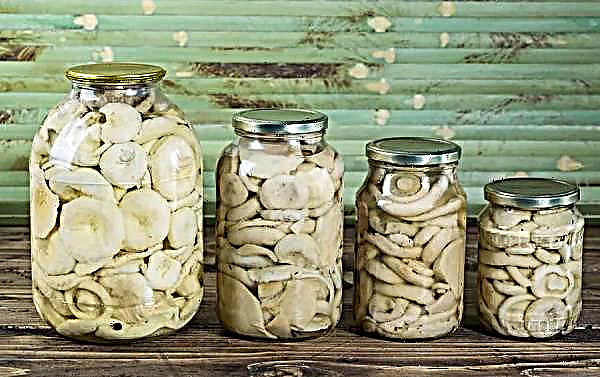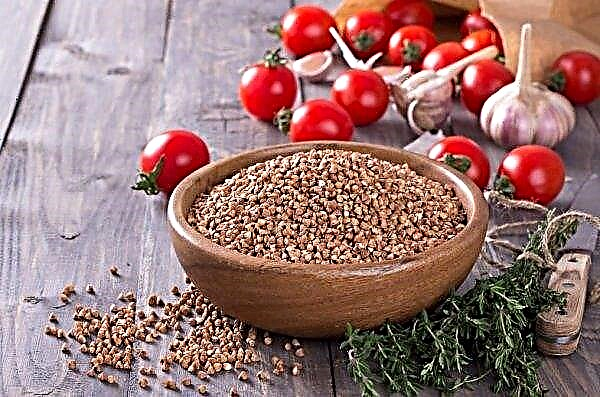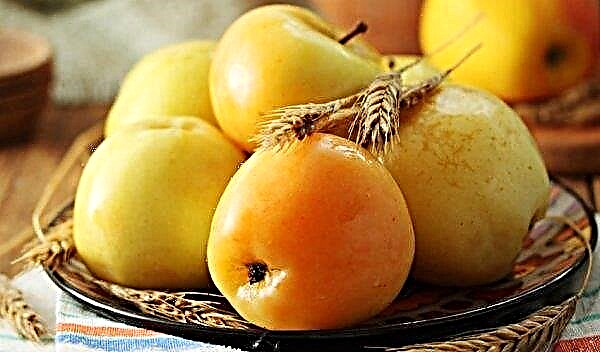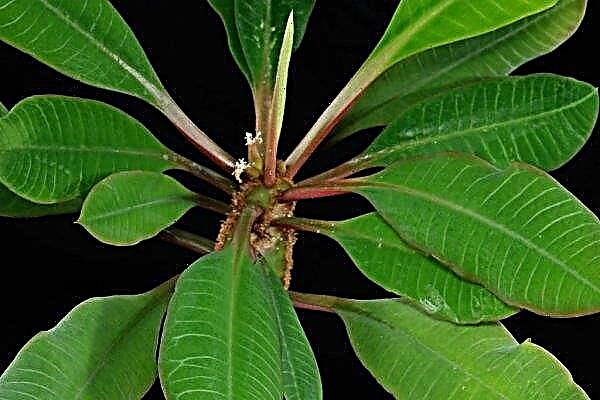The question of why cucumbers do not grow in a greenhouse worries many summer residents, and one can encounter this trouble at any growing season of the crop, both when sowing seeds and at the stage of fruit formation.
Whatever the reasons underlying this fact, all of them are the result of violations committed while caring for the vegetable. From this article you will find out the most common mistakes that caused cucumbers to stop growing, as well as general preventive measures that can prevent the problem from occurring.
How much and how do cucumbers grow in a greenhouse?
According to gardeners, cucumbers grown in a greenhouse have a more pleasant and rich taste, and also have a huge supply of vitamins useful for the human body. Caring for cucumbers in a greenhouse is a simple and exciting process that even beginner gardeners will cope with.

In the case of varieties with early ripening, the first crop can be obtained already on 30–35 days after planting, and later ripen on 45-50 days. Some hybrids are characterized by a very long fruiting period, which allows them to collect fruits throughout the growing season.
There are also cucumbers of a bouquet type of ripening, that is, capable of forming a large number of fruits in one sinus, which in the future will not require their simultaneous cutting.
Also, to obtain a good crop of cucumbers in greenhouse conditions, one should take into account some of the features inherent in this culture:
- Watering cucumbers require plentifulHowever, the soil should not be waterlogged. Both a deficiency and an excess of moisture are detrimental to them, so the best option would be to perform this procedure twice a week, and in especially hot weather every other day. Watering is carried out exclusively with warm, previously settled water. The best time for this is early morning or evening, so that the water has enough time to warm up. Water consumption depends on the phase of the plant - before flowering they spend 6-7 liters, during it - 9-10 liters, and during the formation of cucumbers - 13-17 liters per 1 m².
- Given the thermophilicity of cucumbers, the temperature in the greenhouse should be high - +24 ... + 30 ° С. At night, the temperature should remain within +17 ... + 20 ° С. A lower indicator can significantly slow down the growth of plants, which, however, does not affect their development in any way, and too high can weaken them, so it is very important to monitor the temperature in the greenhouse throughout the entire period of fruiting of cucumbers. Lighting the fruits will also require good - at least 13 hours for the entire time they are in the greenhouse.
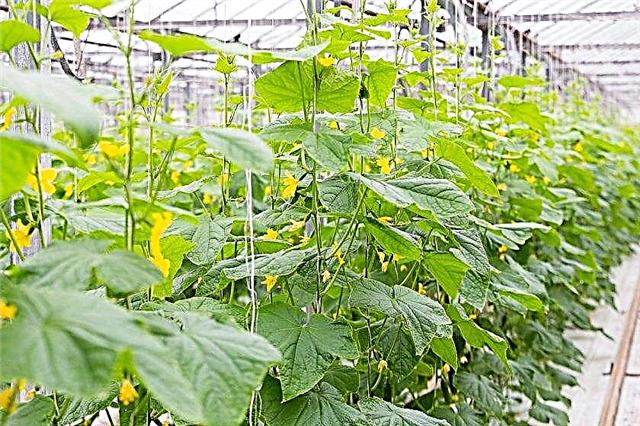
In order to preserve plants from diseases, which provokes stagnation of air, carry out daily ventilation. This is done very carefully to prevent drafts. Dry air in the greenhouse also contributes to the emergence of most pests, in particular spider mites, so in the heat it is necessary to pay increased attention to this procedure. In dry weather, it is reinforced by opening the doors in the greenhouse for the whole day and subsequently for the night. On cloudy days, a short ventilation will also benefit plants, since high humidity is no less dangerous factor causing diseases.
Did you know? More than 95% of the cucumber consists of water.
Why cucumbers do not grow in the greenhouse or grow poorly
Before proceeding to solve the problem, you must first understand the cause of its occurrence, which in the future will significantly facilitate and accelerate this process.

Improper use of agricultural methods can be expressed in the appearance of cucumbers, namely:
- in the slow growth of greenbacks;
- in their soreness and fragility;
- in the numerous injuries left by diseases and pests - the leaves curl and turn yellow, the stalk becomes thin and lifeless, the whole plant becomes stained, etc.
The reasons for the poor or complete lack of growth of seedlings of cucumbers can be a lot, we consider in more detail only the most common of them. The most likely mistakes made when caring for cucumbers, due to which they stopped their growth and development, include the following:
- Poor seed. The problem of poor fruit development dates back to the moment of choosing seeds for planting in the soil, since it is at this stage that inexperienced gardeners most often neglect the basic requirements and procedures for planting material. Seeds selected for planting must meet the following requirements: be of medium size; not have damage and symptoms of the disease; do not freeze during the entire storage period; to be dry.
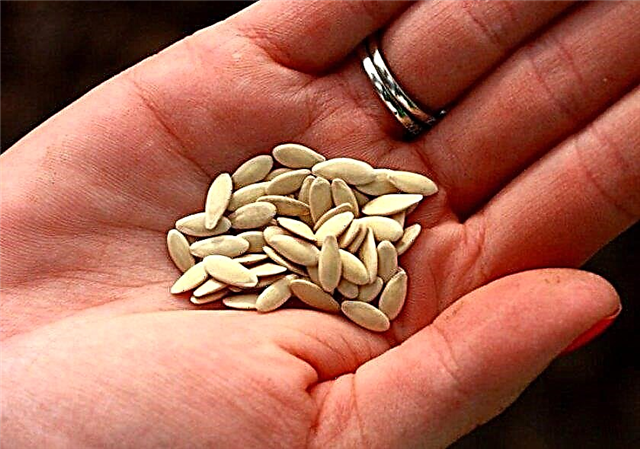 If at least one of the above flaws is present, seedling growth can slow down significantly, or even completely stop. The fruits collected from such plants are characterized by dwarf sizes and a slightly pronounced cucumber taste. There are also frequent cases when gardeners use barren hollow seeds that are simply not able to form viable and resistant seedlings, and even more so a good harvest. In the case of improper preparation or germination of seeds, the sprouts after planting will differ in slow development and will begin to bear fruit much later than the due date. It is on these grounds that we can conclude that the planting material turned out to be of poor quality, so before landing it is very important to verify its suitability and follow the main selection criteria.
If at least one of the above flaws is present, seedling growth can slow down significantly, or even completely stop. The fruits collected from such plants are characterized by dwarf sizes and a slightly pronounced cucumber taste. There are also frequent cases when gardeners use barren hollow seeds that are simply not able to form viable and resistant seedlings, and even more so a good harvest. In the case of improper preparation or germination of seeds, the sprouts after planting will differ in slow development and will begin to bear fruit much later than the due date. It is on these grounds that we can conclude that the planting material turned out to be of poor quality, so before landing it is very important to verify its suitability and follow the main selection criteria. - Incorrect landing technology. For almost all beginning gardeners, one very gross error is characteristic - planting cucumbers in a polycarbonate greenhouse at a minimum distance from each other. This is due to their desire to save as much space as possible for planting other crops, but this technique is fraught with a significant shortage of crops. The fact is that every plant, including a cucumber, needs a sufficient amount of space for normal life, and therefore the distance between them should be at least 30 cm.
 Moreover, each variety has its own list of compatibility with other plants, which must be carefully studied before planting crops. Detailed information on this is indicated on the packaging with cucumber seeds. Thus, it is possible to find out which types of vegetables will not harm cucumbers by their presence on the same bed.
Moreover, each variety has its own list of compatibility with other plants, which must be carefully studied before planting crops. Detailed information on this is indicated on the packaging with cucumber seeds. Thus, it is possible to find out which types of vegetables will not harm cucumbers by their presence on the same bed. - Lack of heat and light. Cucumbers are a very photophilous culture that needs constant lighting for full-fledged life. Its deficiency can lead to deformation of the seedlings - they will begin to dry out, change color and stretch. Thickened plantings can also provoke poor lighting, in which nearby plants cast a shadow on each other and as a result rapidly lag behind in development. Increased demand for heat is due to the tropical origin of cucumbers, which is why their place of growth should be well warmed throughout the day. Especially dangerous is the effect on the culture of drafts and temperature extremes, the duration of which leads to the death of plants.
- Lack or excess of moisture. Two fundamentally different, but equally dangerous mistakes that can slow down and then stop the growth of cucumbers.
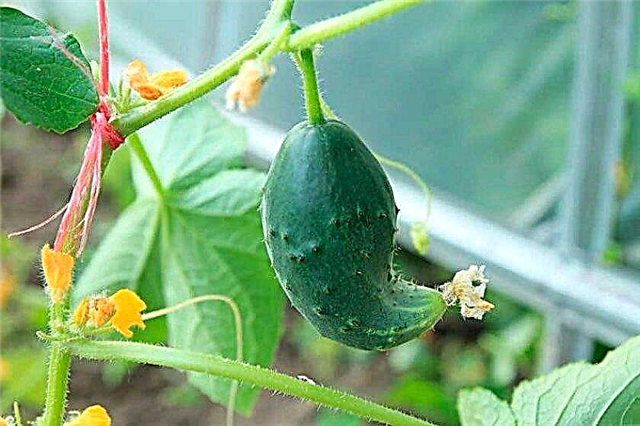 Both drought and overly abundant watering entail falling of the ovaries, and then the death of young plants. It is especially important to ensure that the crop is properly watered the first time after sowing seeds. Soil moisture should be carefully monitored, and the irrigation process normalized to prevent decay of the root system and numerous related diseases.
Both drought and overly abundant watering entail falling of the ovaries, and then the death of young plants. It is especially important to ensure that the crop is properly watered the first time after sowing seeds. Soil moisture should be carefully monitored, and the irrigation process normalized to prevent decay of the root system and numerous related diseases. - Nutrient deficiency. Poor growth of cucumbers can also result from the lack of top dressing, which is so important for culture. Moreover, nutrients are necessary for both adult plants and seedlings. It is possible to determine that cucumbers are in dire need of top dressing by the following signs: the leaves were crushed and turned pale (lack of nitrogen); the sheet plate is directed upward (lack of phosphorus); formation of brown border on the foliage (lack of potassium); change of leaf color to unnaturally bright or dark green color (lack of magnesium).
 If the soil is quite poor and does not contain enough humus and minerals, it is recommended to introduce complex mineral fertilizers that stabilize the situation and normalize plant growth.
If the soil is quite poor and does not contain enough humus and minerals, it is recommended to introduce complex mineral fertilizers that stabilize the situation and normalize plant growth.
What to do and how to solve the problem
Having found out the reason for the slow growth of cucumbers, you can safely proceed to its solution. First of all, it is necessary to reconsider the conditions under which the culture grows, and the agrotechnical methods that turned out to be detrimental to it.
In addition to a shortage or excess of moisture, light and heat, the problem can also lie in the untimely renewal or improperly selected soil, as well as the attack of diseases and pests. Consider each item in more detail.
Soil composition
Gardeners argue that it is loamy soils that are most suitable for growing cucumbers in greenhouse conditions. Acid and heavy soils will cope less with this task, therefore it is not recommended to choose them for this culture.
Cucumbers are also demanding on the level of soil acidity, which should be neutral. In the case of a too low indicator, it is likely that the cucumbers will not take root, and the excessive acidity of the substrate can most negatively affect the development of plants.
Based on these characteristics, the following components may be part of the soil:
- turf land;
- moss sphagnum;
- peat;
- grain husk;
- humus;
- sheet earth.
In addition to natural, inorganic components can also be used, which are also suitable for creating a soil mixture:
- river sand, which contributes to better loosening of the soil;
- slaked lime, lowering the level of acidity;
- Styrofoam;
- perlite, providing the necessary breathability;
- expanded clay.
As an example, we give the composition of the soil, which in all respects is suitable for the cultivation of cucumbers:
- 4-5 parts of peat;
- as much humus;
- 3 parts of ordinary fertile land;
- 1 part of river sand;
- sawdust;
- 1 cup of wood ash.
Optimal conditions
The correct temperature regime in the greenhouse is the key to the full growth and development of any crop, including cucumbers, therefore, throughout this growing season, plants should be given due attention to this indicator.
Important! Temperature differences — one of the main dangers from which plants should be protected. This can lead to their weakening, illness and as a result of death or loss of yield.
Long before the first seedlings appear, tanks with crops are strictly kept in heat - not less than +24 ... + 27 ° С. After the appearance of the first greenery, the cover must be removed, and the crops should be placed in a well-lit and warm room, the temperature in which is within +19 ... + 23 ° С.
As for nighttime indicators, the first few days after the appearance of the embryos, they should range from + 15 ° C to + 18 ° C in order to prevent their stretching, the further rate is from + 17 ° C to + 22 ° C.
Fertilizer application
How to feed cucumbers in a greenhouse is one of the questions that both beginners and experienced gardeners are asked. Good fruiting of plants is by no means least facilitated by top dressing, due to which a healthy and developed root system is formed.
According to the method of feeding, they are divided into root and extra root, which are equally important for the full life of cucumbers and their abundant harvest. Consider each method in more detail.
Root
When making root dressings, you should be guided by a certain schedule in order to get the most out of this procedure and not harm the cucumbers.
There are four of them and each corresponds to a specific vegetative phase of the plant:
- First feeding It is carried out after the appearance of 3-4 real leaves in Zelentsy, since already at this stage the root system of young plants is already quite developed and ready to consume nutrients. Fertilizers must be applied after watering, it is best to do this later in the evening or on a cloudy day. For the first root dressing of cucumbers you will need: 20 g of ammonium nitrate; 15 g of potassium sulfide; 5 g of superphosphate. After diluting these elements in 15 liters of water, a nutritious mixture is formed, which is enough for 20–25 cucumber bushes.
- Next feeding it will be required a few weeks later, at a time when cucumbers are actively blooming and forming ovaries. The most suitable fertilizers are chicken droppings and mullein, but for a greater effect, it is also recommended to add 10 g of manganese sulfate, half a glass of ash or 1 tbsp. l nitrofoski. After that, the resulting mixture is diluted in 15 liters of water and consumed according to the following scheme: 4 liters of solution per 1 m².
- The third time top dressing is carried out after 2-3 weeks. To do this, by diluting in 15 liters of water 2 tbsp. Mullein produces a solution, which is subsequently spent for reasons of 8-9 liters per 1 m² of greenhouse.
- Fourth and the final time fertilizers are introduced after another week with the same composition and scheme.
Foliar
It is impossible to fully develop cucumbers without foliar top dressing, which is the best suited for use in cloudy and cold weather. The thing is that under adverse weather conditions, nutrients are much worse absorbed by the root system of plants, and therefore spraying the leaves will be a more effective and efficient method.
This procedure should be carried out in small doses, after waiting for the full integration of Zelentsy after planting, thereby increasing their chances of recovery and replenishing the supply of all the components they need.
For this purpose, as a rule, they use complex dressing for cucumbers, optionally adding some individual vitamins or minerals to it. If in doubt about your capabilities, it is best to purchase a ready-made fertilizer.
Recommended Reading

You can also make it yourself, by including the following components in the composition and stirring in 15 liters of water:
- 0.5 g of boric acid;
- 50 g of superphosphate;
- 1 g of zinc;
- 0.2 g of manganese;
- 40 g of potassium nitrate.
An even more simplified option would be to dilute 170 g of urea solution in the same aqueous proportion.
Well established as foliar fertilizers and yeast, which are also suitable for spraying leaves. For 15 liters of water, only one pack is required.
The resulting mixture for several days should be infused in the sun with periodic stirring, after which it is again diluted with water and sprayed on the leaves. There should be no more than 6 such yeast supplements for the entire season.
Did you know? In ancient Egypt, it was customary to put cucumbers in the tombs of the pharaohs along with other gifts, as well as depict them on sacrificial tables.
Pest and Disease Control
Insect pests and various dangerous ailments, which arise as a result of adverse conditions and poor-quality care for cucumbers, also create many problems when growing crops.

An inexperienced gardener is practically incapable of recognizing signs of parasites or diseases, since most of them are asymptomatic at first and rapidly turn into a chronic form that cannot be treated.That is why it is important to take care of prophylaxis in advance, which guarantees the safety of the crop and crops from damage and death.
The protection of cucumbers from such misfortunes is carried out using folk remedies, namely decoctions and infusions, which include plant materials - most often these are garlic arrows or leaves.
The use of a solution of pink manganese, green soap, mustard and ash is also effective. As for the chemicals, they should be used very carefully and in the most extreme cases, since eating cucumbers after their use is strictly prohibited for 25-30 days.
How to prevent problems when growing cucumbers
Cucumbers are able to please with a plentiful harvest, a healthy appearance and long fruiting only subject to all the necessary agricultural methods and quality care.  The following recommendations will help improve these indicators, as well as prevent the occurrence of the above problems:
The following recommendations will help improve these indicators, as well as prevent the occurrence of the above problems:
- In the case of prolonged rainfall and high humidity, the risk of rot in especially thickened places of weaving of cucumbers increases. You can avoid this by tying the plants to the supports. This is done as follows: a certain number of stakes are driven into the ground so that they are fixed firmly enough, after which a fishing line is pulled between them and cucumbers are tied to the resulting composition. The result is something like a vineyard.
- The next difficulty that impedes the normal growth and development of culture may be an excess of exclusively male flowers, as a result, pollination cannot occur. In this situation, the best way out is the following technique: experienced gardeners who often encounter similar ones recommend stopping watering the plants for several days, allowing the soil to dry slightly, and then resume water procedures with moderate force. Such a shake will normalize the formation of both male and female flowers and reduce the risk of an abundance of barrenness.
- Often also the drying and falling of the ovariesThe reasons for which can be an excess of moisture in the soil and thickened plantings, which led to the competition of plants for nutrients. The cessation of irrigation for 3-4 days, during which cucumbers are actively fed with ash or mineral fertilizers, will effectively help to get rid of the problem.
- It is very important to approach the organic feeding procedure with caution - it is highly likely that it contains various bacteria and pest colonies that are very resistant to environmental conditions and can significantly reduce yield.
You can achieve healthy and long-lasting fruit-bearing plants only by paying them proper attention and care. Cucumbers grown in a greenhouse by all the rules and with love will certainly delight their owners with a delicious and excellent harvest, unpretentiousness and many other advantages.Important! Timely updating of the soil will protect against most diseases that can damage seedlings and crops.


 If at least one of the above flaws is present, seedling growth can slow down significantly, or even completely stop. The fruits collected from such plants are characterized by dwarf sizes and a slightly pronounced cucumber taste. There are also frequent cases when gardeners use barren hollow seeds that are simply not able to form viable and resistant seedlings, and even more so a good harvest. In the case of improper preparation or germination of seeds, the sprouts after planting will differ in slow development and will begin to bear fruit much later than the due date. It is on these grounds that we can conclude that the planting material turned out to be of poor quality, so before landing it is very important to verify its suitability and follow the main selection criteria.
If at least one of the above flaws is present, seedling growth can slow down significantly, or even completely stop. The fruits collected from such plants are characterized by dwarf sizes and a slightly pronounced cucumber taste. There are also frequent cases when gardeners use barren hollow seeds that are simply not able to form viable and resistant seedlings, and even more so a good harvest. In the case of improper preparation or germination of seeds, the sprouts after planting will differ in slow development and will begin to bear fruit much later than the due date. It is on these grounds that we can conclude that the planting material turned out to be of poor quality, so before landing it is very important to verify its suitability and follow the main selection criteria. Moreover, each variety has its own list of compatibility with other plants, which must be carefully studied before planting crops. Detailed information on this is indicated on the packaging with cucumber seeds. Thus, it is possible to find out which types of vegetables will not harm cucumbers by their presence on the same bed.
Moreover, each variety has its own list of compatibility with other plants, which must be carefully studied before planting crops. Detailed information on this is indicated on the packaging with cucumber seeds. Thus, it is possible to find out which types of vegetables will not harm cucumbers by their presence on the same bed. Both drought and overly abundant watering entail falling of the ovaries, and then the death of young plants. It is especially important to ensure that the crop is properly watered the first time after sowing seeds. Soil moisture should be carefully monitored, and the irrigation process normalized to prevent decay of the root system and numerous related diseases.
Both drought and overly abundant watering entail falling of the ovaries, and then the death of young plants. It is especially important to ensure that the crop is properly watered the first time after sowing seeds. Soil moisture should be carefully monitored, and the irrigation process normalized to prevent decay of the root system and numerous related diseases. If the soil is quite poor and does not contain enough humus and minerals, it is recommended to introduce complex mineral fertilizers that stabilize the situation and normalize plant growth.
If the soil is quite poor and does not contain enough humus and minerals, it is recommended to introduce complex mineral fertilizers that stabilize the situation and normalize plant growth.

